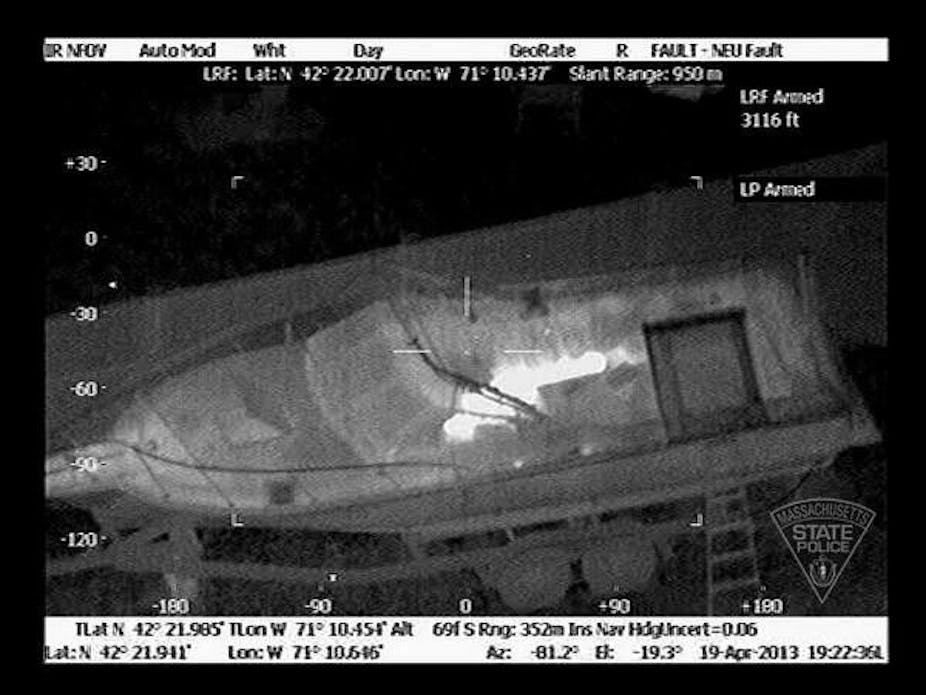The received wisdom is that the Tsarnaev brothers launched their attack on the Boston Marathon to advance the cause of their fellow Chechens.
But is this correct?
Two notable Chechens are absent from the virtual hall of heroes and martyrs on Kavkazcenter.com, the official website of the Caucasus Emirate, the self-proclaimed Islamist state in Russia’s Caucasus region (which Russia and the US State Department have designated a terrorist entity).
These are 26-year old Tamerlan and 19-year old Dzhokhar (also known as Johar) Tsarnaev, who allegedly perpetrated the Boston Marathon bombings - killing three and wounding more than 170 - then several days later killed a policeman working at Massachusetts Institute of Technology.
In a April 21, 2013, statement, the Command of the Mujahideen of the Caucasus Emirate Dagestan Province stressed that their group was “not fighting with the United States of America”, that Russia is their enemy, and that the Leader of the Caucasus Emirate Dokku Umarov (Dokka Abu Usman) issued a declaration prohibiting his fighters from conducting acts of violence against civilians (but not military personnel) in February 2012.
That the brothers’ alleged actions on April 15 radically contradict and contravene CE policies and directives, and that Kavkazcenter.com has made serious efforts to distance itself and the CE from the Tsarnaevs’ alleged actions is significant, suggesting it is highly likely the Tsarnaevs did not consider the Chechen or broader Caucasian struggle against Russia as their primary motivation.
It is also very probable the Tsarnaevs conducted their attack without any overseas organisation’s direction or financial assistance.
How the Tsarnaevs used social media suggests they may have identified with broader causes: that Johar posted his worldview as “Islam” on his social media sites, might just be a benign, honest statement of faith; but it could also suggest that he may have identified with a broader ummah (nation or global Islamic community), beyond the brothers’ beleaguered co-ethnics.
However, Tamerlan had become more religiously and politically intolerant over the past several years, and began posting extremist videos celebrating violence on his social media sites.
Developments in neo-jihadist doctrines and new and social media provide further insights into how they may have developed a broader worldview and acquired the means by which to perpetrate terrorist attacks.
Neo-jihadist strategist and fighter Abu Musab al-Suri produced the internet-circulated The Global Call to the Islamic Resistance, in 2005. He stresses that the US-led invasion of Afghanistan significantly impeded al-Qaeda’s ability to assist similar groups materially and otherwise.

Therefore, it was up to individuals and small groups to finance, prepare for, and execute attacks in their own countries on their own, independent of outside sources of funding, support and instruction.
The book was very influential globally: the leader of the cell arrested in Melbourne in 2005 praised this cyber manual fulsomely and drew on it extensively while he and his colleagues were preparing for a terrorist attack in Australia. It is regarded as the textbook of home-grown terrorism.
That law enforcement in the US and Boston Mayor Tom Menino have indicated that the Tsarnaev brothers probably acted on their own in the attack suggests that they were following at least the spirit, if not the letter of al-Suri’s treatise.
Al-Qaeda in the Arabian Peninsula have been circulating the English-language Inspire Magazine to motivate prospective terrorists to conduct these individual or small cell attacks, and to provide them with instructions on how to do so since 2009.
A very recent issue of Inspire Magazine included instructions on making explosive devices using pressure cookers, and also suggested that perpetrators should not claim responsibility for successful attacks.
There is an eerie correspondence between these instructions and what occurred in the Boston Marathon bombings and its aftermath. Forensic experts confirmed that the bombs used in the April 15 attacks included parts that had been treated in pressure cookers, and no one claimed responsibility for the operation.
It has not yet been reported whether or not either or both of the Tsarnaevs had ever accessed issues of Inspire Magazine, were ever in possession of any of its issues nor even if either or both of the Tsarnaev brothers built the devices themselves.
Nonetheless, the attack they conducted corresponded with recent internet-circulated documents that were prepared to advance Islamist causes and conduct terrorist attacks. Therefore, it remains plausible that the Tsarnaevs may have been attempting to advance a broader Islamist agenda independently of any established entity, and doubtful that they were in league with or advancing a Chechen or North Caucasus cause.
As Tamerlan died following a shootout with US Federal and Massachusetts State and municipal law enforcement officers, and Johar is in hospital recovering from serious wounds he received in that fight and attempting to evade arrest, including a (perhaps self-inflicted) throat wound, it remains to be seen whether one of the brothers will tell the world what motivated them.
Many questions may remain unanswered.

